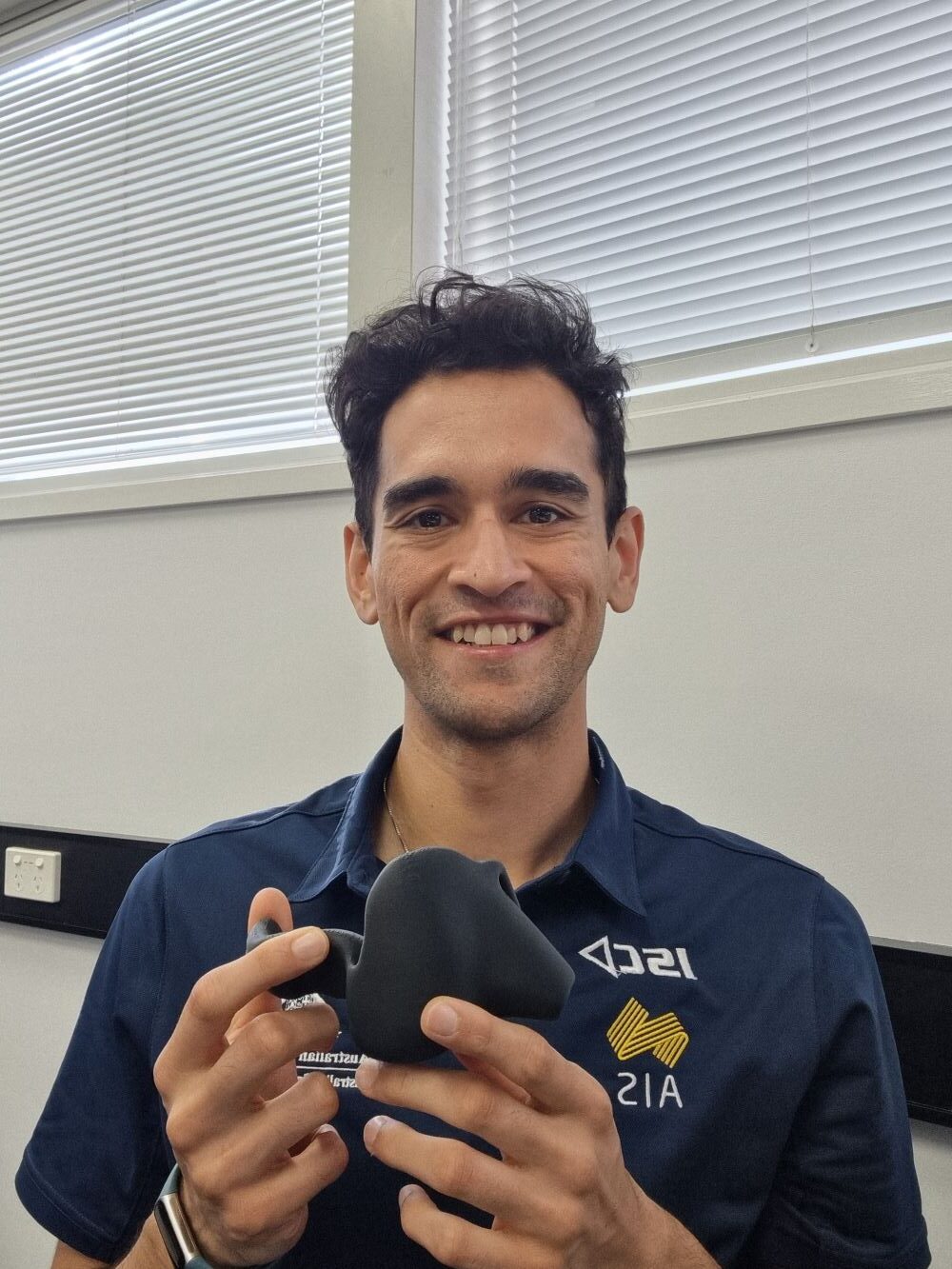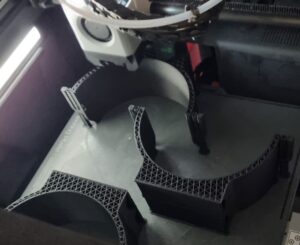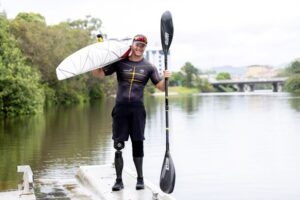A Griffith masters student has been working with an esteemed team of engineers at the Australian Institute of Sport (AIS) to design and deliver cutting-edge technology for Paralympic athletes.

Rajtilak Kapoor’s work is supporting multi-medallist wheelchair racing athlete Angie Ballard and her push for podium success at Paris 2024.
Together, he and the team at AIS have been developing highly customised, 3D-printed racing gloves, designed to optimise Ballard’s pushing technique for greater power and efficiency.
“The hands are an abrasive surface, and when you’re pushing with such power, you’re prone to slipping and inhibiting pain,” he said.
“These racing gloves mould directly to Angie’s handshape, allowing her to push past her pain threshold as the glove is taking the direct force out of it.”
Mr Kapoor said CAD software and 3D printing has revolutionised the world of sports engineering, both technologies allowing for the creation of precise, custom-made equipment tailored to an athlete’s specific needs.
He said 3D printing specifically is not only more environmentally friendly, but it ensures the consistency and repeatability of a product, crucial factors when minor details and milliseconds of difference could mean a medal gained or lost.
“Athletes can detect even the slightest variation in equipment,” Mr Kapoor said.
“Previously, even if you had the same craftsman developing the same product with the exact same specifications, they might not be able to make any two things exactly alike.
“For elite athletes, they might not be able to tell you exactly what it is, but they’ll be able to tell you that something feels different and that variation can be the deciding factor between a gold, or nothing.”
Beginning as putty sculpted to the athlete’s hand in motion, a 3D scan is taken and then transferred across to software for smoothing, refinement and material selection before completing its journey at the 3D printer.
“Every wheelchair racer coming through the AIS and competing at this level will have their own sort of custom version of gloves; we’ve now built up a library of equipment for all the athletes,” Mr Kapoor said.

In the midst of studying a Masters in Electronics and Sports Engineering at Griffith, Mr Kapoor interned at PUMA in Germany over a period of several months.
“My professors and supervisors at Griffith, Hugo Espinosa, David Thiel and David Rowlands, were super supportive of me pausing my degree to go over and get the practical experience at PUMA,” he said.
“They even accommodated for the time zone differences, logging on in the evening for me to deliver my presentation abroad.”
With just one unit of study left and a determination to officially graduate from Griffith, Mr Kapoor is finishing cross-institutional study from his base in Canberra whilst enjoying a dream gig at the AIS.
“I wanted to combine my background in mechanical engineering with sport, two things I was really passionate about, so to work for one of the National bodies in this space was always the goal.”
As well as having the technical experience and accreditation, Mr Kapoor cites the co-curricular activities on his resume as an integral part of landing roles in his desired field.

“Right from studying my undergrad, I was heavily involved in lots of the societies and clubs at Uni, and I still have some of those listed on my resume to this day,” he said.
“I always wanted to work in sport, so everything that I’ve done within and around sport, even if that means I played cricket, or was captain of a team or part of a sports organisation, I’ve always kept them on my resume.
“It becomes a talking point, especially something like sport which is really valued in Australia, and you can draw on skills you’re learning through sport that translate to the workplace.”

“There are so many transferable skills, even seemingly simple things like getting along with your team, leading a team, or learning how to get along with other people.”
“At the end of the day, whether it’s through developing equipment that they can use in their sport or enhancing training and recovery, the goal is to enable athletes to perform at their best,” he said.
Mr Kapoor said whilst the team has now finalised their project with Angie Ballard, it won’t be until after the Paris 2024 Games that they’ll be able to truly evaluate the effectiveness of their work.
Angie Ballard will join Paralympic canoeing gold medallist and Griffith aviation student Curtis McGrath as co-captains of the Australian team in Paris this August.


